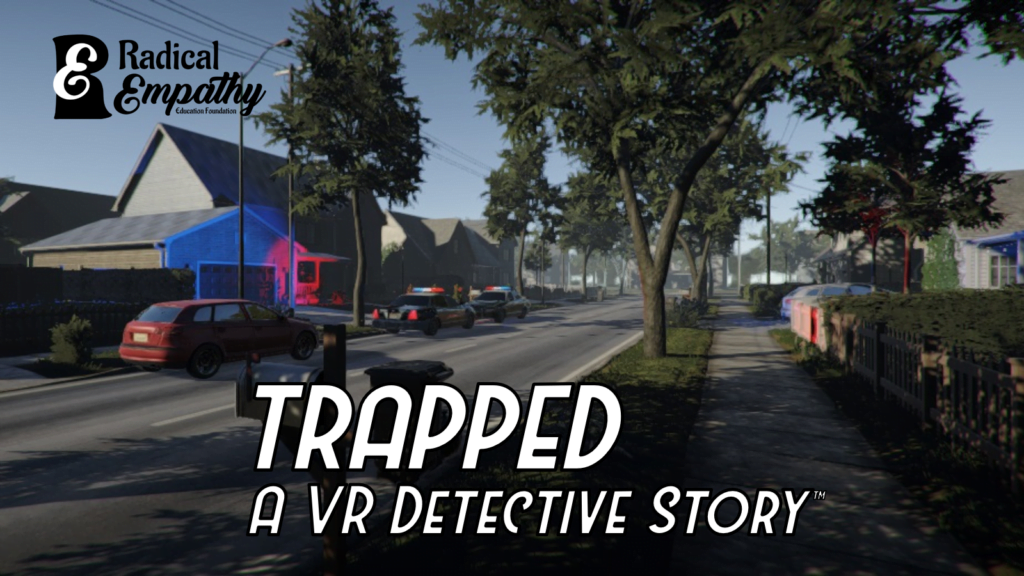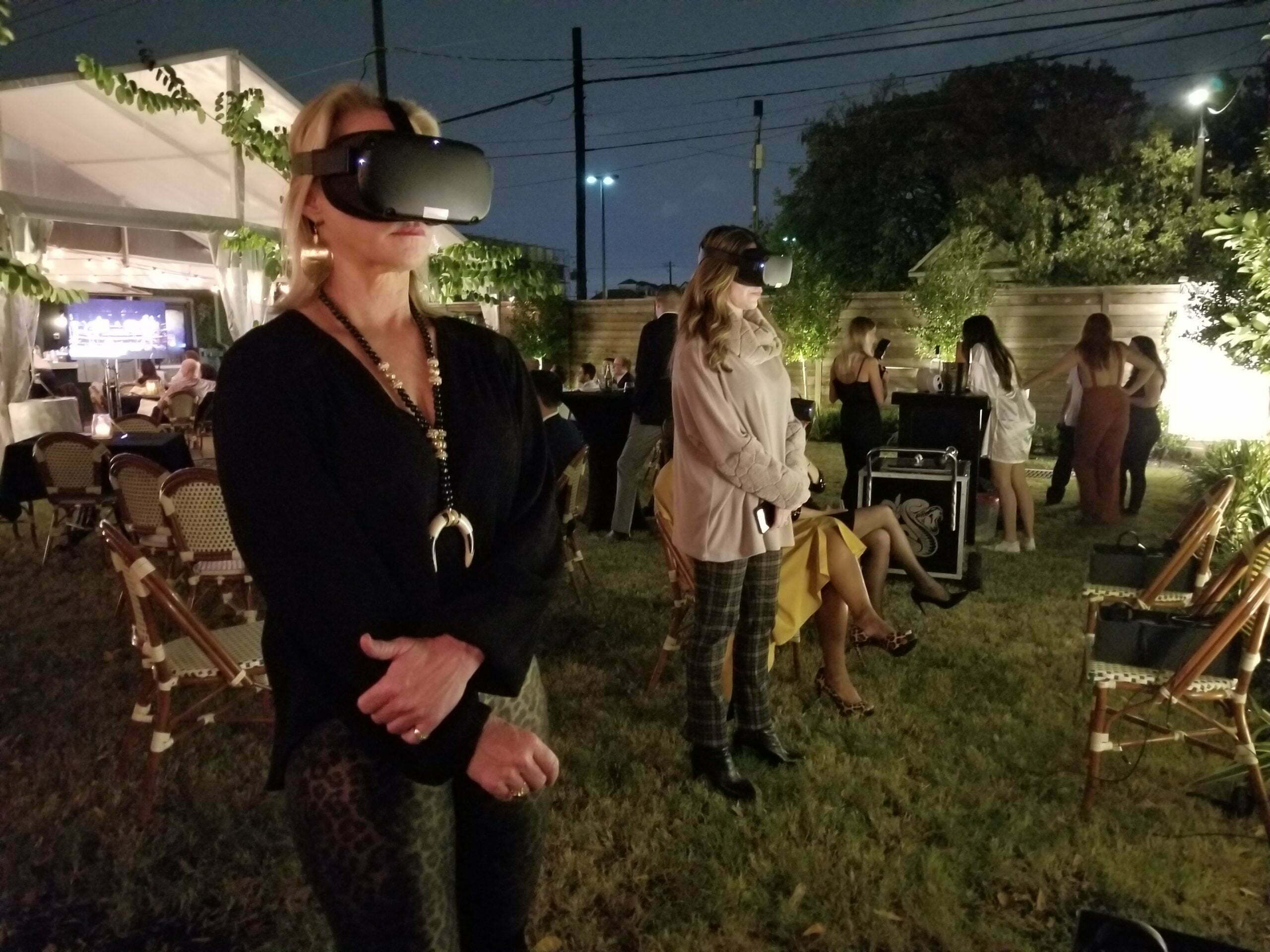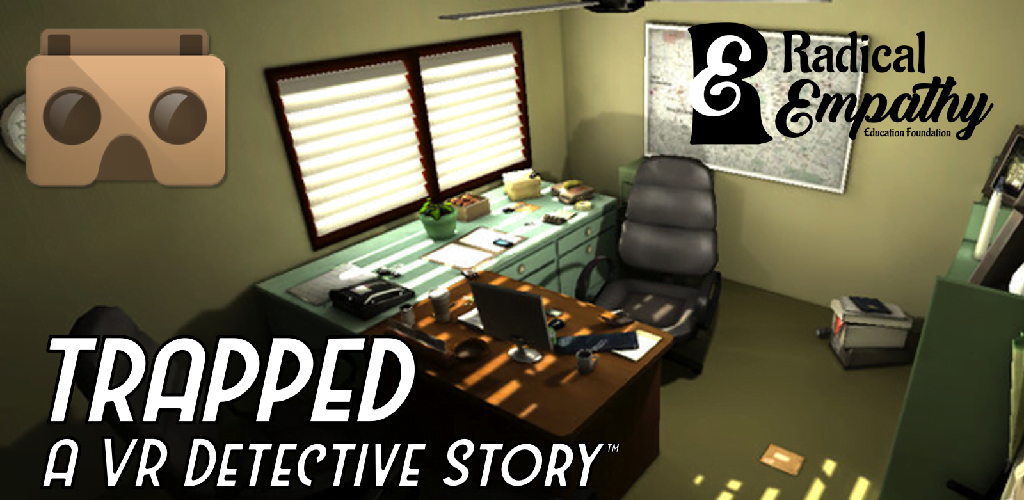Why Not Make an Augmented Reality Experience to Raise Awareness?
I am often asked if I have considered turning Radical Empathy‘s Virtual Reality application, TRAPPED: A VR Detective Story™ into an Augmented Reality application.
You BET I have and I would LOVE the opportunity to do it!
My mind is completely open to the idea and I'll give you a look at my thought process. Maybe we can create something together one day!
What makes a user experience unique and delightful?
The thing that drives my interactive product designs is that, to make the most impact with a user, you want to fully and delightfully use the unique “hardware features” of the device the app is on, which ideally are different than any other configuration of hardware/software. VR is fantastic for “immersion” and isolation. You can have a very intimate communication with a user, like nothing I have ever seen or felt.
The “agency” of player choice in a computer generated world (rather than a 360 movie) gives you an unparalleled sense of control.
And the way it uses kinesthetics is sublime. It convinces your brain it's really there.
The 3d audio positioning takes it over the top.
This is what TRAPPED: A VR Detective Story™ utilizes to make the interactive story (of the 14 year old Lisa) feel so real and impactful.

TRAPPED: An Online Detective Story™
Before I go into the AR description, let me tell you how I imagine the VR story playing out and being adapted for a web browser.
Radical Empathy is re-designing the experience for use in a browser. There will be none of those above virtual reality hardware features, so we will be using others:
- Point and click interface (or drag and press on phone)
- Access tons of data over the internet at the point of interaction (i.e. contextual access to deeper materials and content, like podcasts, videos, blogs, regulations, etc.).
- Multiple login types (student or cable installer, etc.) that see different material based upon their access level or perhaps geolocation.
- Reporting and testing, if used for job training.
- Stereo audio.
- Etc.
One thing I learned about VR is that you have to make it SO SO SO simple because you only have seconds to engage someone before they lose their attention or get confused. It took around a year to get the experience correct for our users.
User experience testing on the web browser will likely take 2-3 months to really get it right.
It's really the same for every other type of experience, but VR is such a new experience for most people that you have to think of users as someone that's never used a computer. After all, you're putting them in a headset with headphones and hoping they can figure it all out themselves and YOU CAN'T EVEN SEE WHAT THEY ARE DOING!

Augmented reality challenges
That leads me to AR. Which is ALSO very confusing for regular people.
First, a user would need to download an app on their phones. Sure that sounds easy. But have you ever really thought about all the steps that takes?
- All sorts of device compatibility issues, OS update challenges, app store connections, other misc. complications (like WiFi connectivity), app approvals, and other issues.
- For instance, one huge, unexpected complication is that if you mention trafficking of a child in an official app store app (Apple or Google), you get immediately banned from being available in certain countries.
- The approval process for every update can be super complicated, even causing your app to be deleted from installed users' phones.
I originally made a Google Cardboard (VR) app of TRAPPED: A VR Detective Story™ (deprecated Google Play Store image below) and gone through that above frustration. It was the very first VR trafficking app / story I'd done along this journey and it is no longer available.
As an aside, this approval/censorship is why PBJ Learning hosts all our own videos and interactive content for our online course ourselves. Vimeo, YouTube, and other video hosts, not to mention your ISPs or even payment provider or bank, can just change their terms of service instantly and we would be in scramble mode.
Same for Radical Empathy's VR app, TRAPPED: A VR Detective Story™.
We bypass the Oculus app store for many of the same reasons, beyond the fact that Facebook is absolutely not interested in our app. Which is a much, much longer story.

My augmented reality awareness app idea
But back to AR. I have an idea of what I would do with AR in an app, but I am open to hearing more… Here's my idea… At our in person IMPACT Events, we have the ability to set up objects on tables. We could let people download an app that would let the objects “speak” for themselves.
You could walk around and try to “catch them all” (through QR codes or taking pictures or camera scanning) and then interact with those objects somehow. The default would be to let you learn about the story and how that particular object fits into “Lisa's world.” I think, although I haven't built it and tested it with people, that people love a physical collection mechanism, and being able to connect objects to a larger world and story.
So that's what I've been imagining for AR, assuming we could get on the app stores. I bet your idea is way different and probably way better. What do you have in your mind's eye?
SPECIAL THANKS! Coding development of the Quest version of TRAPPED: A VR Detective Story was done through Mission Critical Studios. If you reach out to them, let them know Billy Joe sent you!
